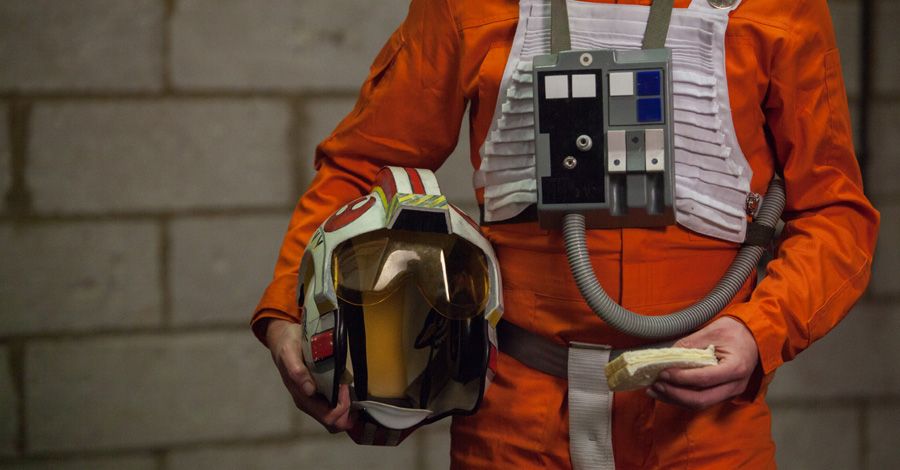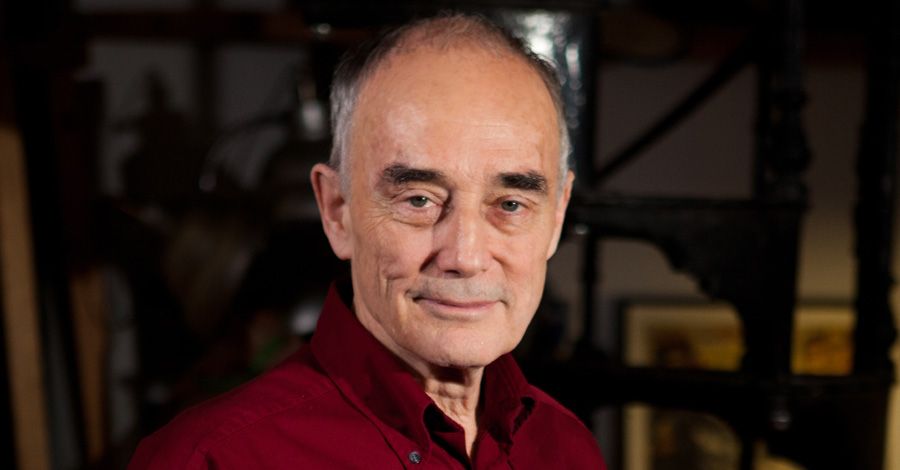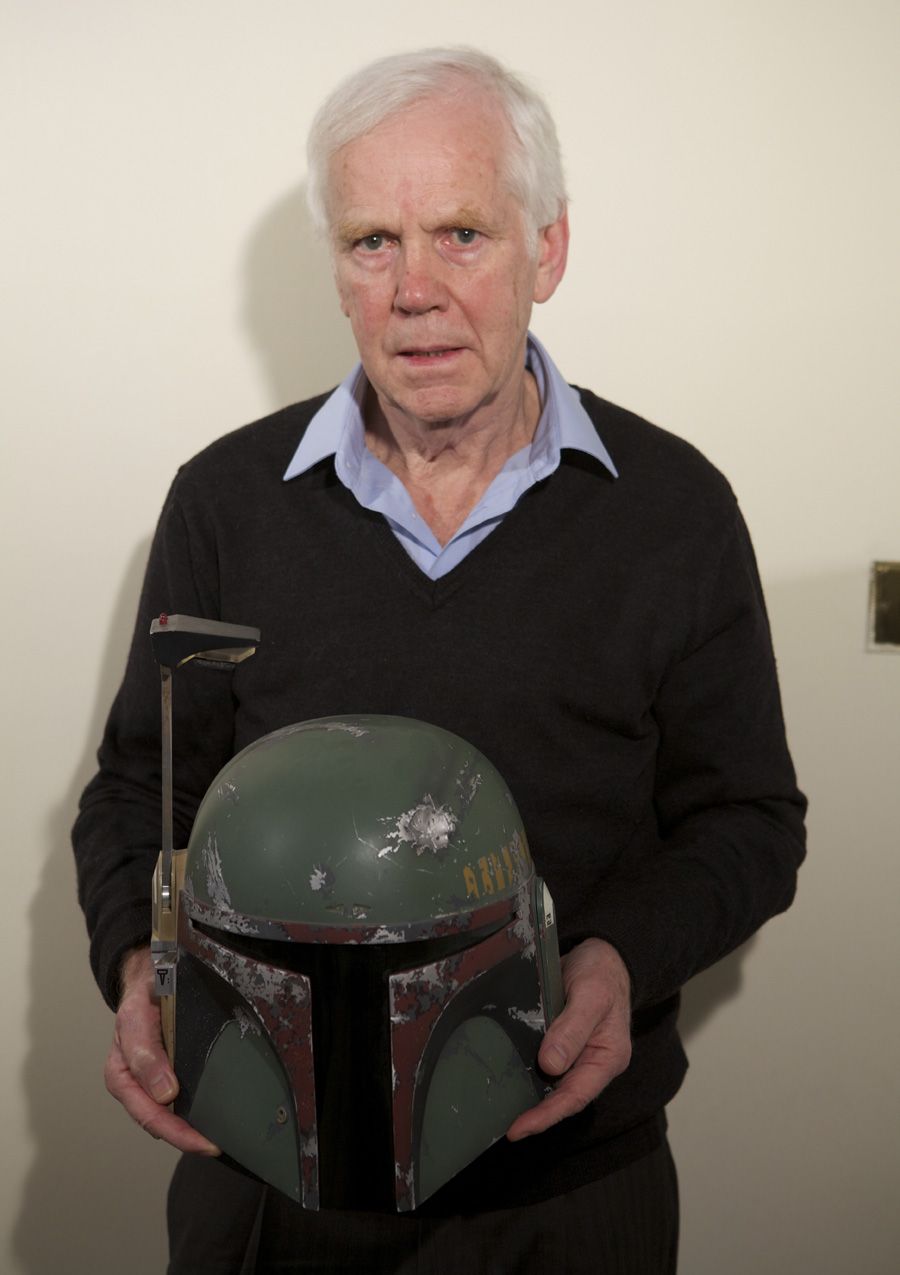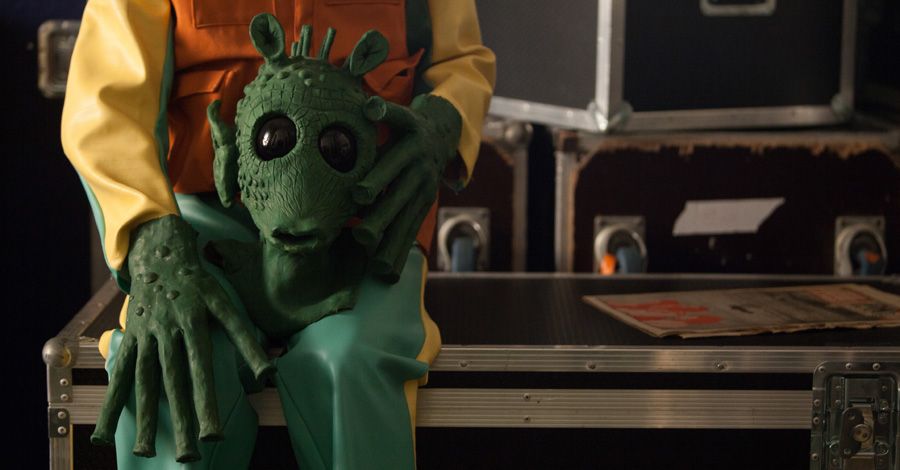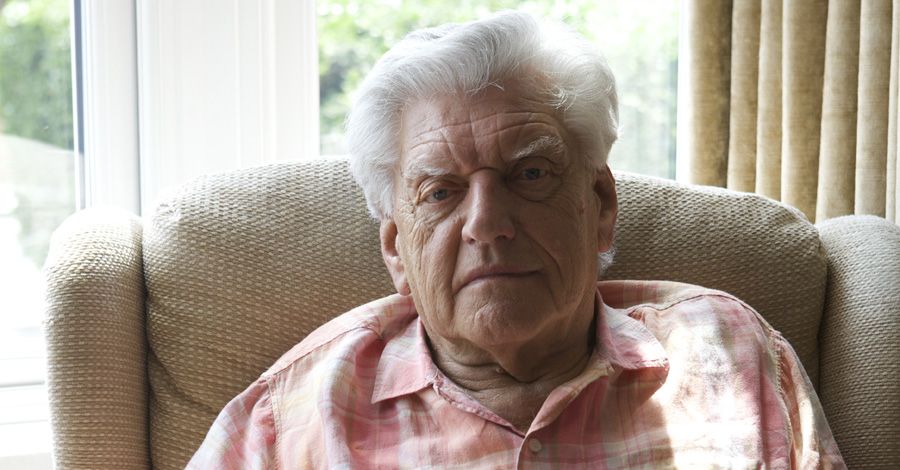“Star Wars” may be set a long time ago, but for some of the actors and extras who were on the set of the original trilogy at England’s Elstree Studios, the movie phenomenon is never far, far away.
In the new documentary “Elstree 1976,” Jon Spira (“Anyone Can Play Guitar”) delves into the lives of a unique collection of players from the early days of the saga who, four decades later, still can’t help but be associated with “Star Wars,” even if their identities were obscured on screen by helmets or makeup. Some amassed deep acting resumes in the years before and since, while others enjoyed only a brief moment in the spotlight – but one that’s relived over and over again, at a never-ending series of conventions.
Among the subjects are Garrick Hagon, the prolific actor whose role as Luke Skywalker’s pal and Rebel pilot Biggs Darklighter was even more significant in the film’s original edit; Jeremy Bulloch, a veteran of stage and screen who performed under the compelling helmet of bounty hunter Boba Fett; Paul Blake, a veteran Shakespearean who, as the alien mercenary Greedo, knows exactly who shot first; and Angus Macinnes, the accomplished film actor in the X-wing cockpit as Gold Leader.
There’s also Pam Rose, a longtime professional extra who can be seen as an alien waitress in the Mos Eisley Cantina; Anthony Forrest, both the famously Jedi Mind-Tricked Stormtrooper and, in cut scenes, Luke’s buddy Fixer; Derek Lyons, an extra/actor turned iconic music photographer; former model/musician Laurie Goode in multiple guises; and one-timer John Chapman, who can be glimpsed in a sole shot as an X-wing pilot.
The crucial, heavyweight “get” among the interviewees is actor/bodybuilder David Prowse, who was the imposing physical form under the black mask and heavy costume of Darth Vader in all three films of the original trilogy. Prowse has long been a controversial figure in “Star Wars” circles, after allegedly leaking a key plot twist to the press during the making of “Return of the Jedi,” and claims he has been effectively banned from official Lucasfilm functions. Prowse’s presence in particular lends a unique air of pathos.
“Elstree 1976” isn’t a superficial nerd-out: It’s a fond, sometimes poignant and occasionally disturbing portrait of a diverse group of players. “I think there’s a slight misconception that this film was made because I was a ‘Star Wars’ fan or because it was a film about “Star Wars” in that way,” Spira says. “But really it’s a film about human beings, and what it does to very normal people to be associated in such a tiny way with something that is so culturally significant.”
Spira, along with Hagon and Bulloch – two of the most established performers outside of the franchise, and two of the most popular within fan circles – offered SPINOFF their perspectives on the utterly unique and ever ongoing place of these working actors within the pop cultural pantheon of “Star Wars.”
Jon Spira (filmmaker): I was teaching screenwriting about a decade ago – it was quite a long course, and I got to know my students. One of them was John Chapman, who’s in the film. And he told me one day that he was in “Star Wars.” He’s not a very forthcoming guy, and he just told me as little aside. He was like, “Do you like ‘Star Wars’?” and I was like, “Sure,” and he said, “Well, I was in it.” And I was kind of intrigued by it. He said ‘Come out to my car,” and he showed me he had all these boxes of glossy photos and he told me about the conventions, and I just found it fascinating.
It sounded like a strange world, and I asked him if I could go along to one with him, and I did. I sat with him, and I watched going through these kind of highs and these lows. I’d never seen anyone swing from emotions so quickly. Half the time people would be walking past him, or ignoring him, or even worse, they’d be kind of staring at him, and you got the suggestion that they were thinking to saying to each other, “Why is he here? Why would people want to meet an extra?” And at those times he’d seem very despondent, and he’d say, “Well, maybe I’ll go home and call it a day and not bother with this.”
And then five minutes later, someone would come along who thought he was just the best guy in the world and couldn’t believe that they were talking to someone who had been in “Star Wars.” And at that point John really cheered up – he was incredibly happy and kind of elated. I was fascinated by that experience. It’s a human experience that a lot of people don’t go through, and it really stuck with me.
Ten years later, the idea hadn’t left me. It threw up a lot of questions to me about how we as a society elevated pop culture to a really high level, to the point where it’s one thing maybe to deify George Lucas for telling the story, or Harrison Ford for sort of carrying the whole thing along.
But when we hit that point of obsession, that even someone who was involved in the tiniest way they could be involved in the film is, 40 years later, elevated to a higher status for that connection, which is something that they really didn’t do much with, it interested me how it affected those people. I could see there was a whole community of people, which John was a part of, and I really came to it from a very human level.
Garrick Hagon (Biggs Darklighter): At the time, it was just another job, fortunately. I was doing other films. In fact, at the same time as I did “Star Wars,” I was doing “A Bridge Too Far,” and these parts came along. We were all working actors who happen to be offered this script that we didn’t really know much about, and we didn’t know what would become of it. The wonderful thing was to have this kind of job blossom in such a fantastic way. And I’m sure that’s what they guys who were extras in the film and so on …I mean, their lives were transformed, as “Elstree 1976” points out.
Jeremy Bulloch (Boba Fett): [At first] I just thought, “That’s going to be uncomfortable.” I was shown a suit with the helmet and these knee pads. Everything was strapped around the back of your leg, and that was stinging like anything. I thought, “This is going to be a laugh. I wonder how much I’ve got,” and “I wonder how many lines I have,” and they told me and I thought, “Anyway, that’s quite right, I haven’t got much to do, that’s good.” But you’re just thinking of your comfort, if you’ve got to stand around in funny spike shoes and all these funny different belts which are pulling across your neck. You can look cool by just standing in a certain way, but it was really uncomfortable. But you’ve got to get on with the show.
A favorite day on set: I can remember coming in, we’ve just seen Han Solo going into the carbonite, and there was all the smoky atmosphere there. And before we got to the bottom, I just gently, by mistake – and it was by mistake – stepped on Darth Vader’s cloak, and he toppled. I also went down. I said, “Quick, help us up here because we look silly!” How did I do that? It was just a brief nudge and a foot on the cape. Darth Vader was OK again.
Hagon: Of course now, it means a heck of a lot. It’s a badge that I wear proudly, and it means something – I don’t want to be tagged simply as a “Star Wars” actor, but it does mean, wherever I go, it’s a conversation starter and so on. I mean, I’ve been in very obscure places and somebody will mention, “You were in ‘Star Wars,’” and little lights go on in the eyes. There’s a lot of interest there. But it’s not a calling card, particularly, for me.
When the special edition came out, 1998, things got heated up a little bit. I hadn’t done any conventions or public appearances until that time, and it kind of grew from there. I was busy with all the other things that kept me alive since “Star Wars,” so it was a gradual process. Others like Jeremy and David and so on were at it much earlier, and they became aware of the phenomenon and the fan base building much earlier than I did. Now, it’s phenomenal.
Bulloch: It is the most extraordinary thing to cover your face up and become so well known around the world … I had four lines or five lines on the screen in “The Empire Strikes Back.” It’s still probably the most incredible thing I’ve done.
But most of my work is theater, television and other film. But this tiny little bit has brought more giggling and laughing from the grandchildren to friends of mine saying, “Oh, my God, you’re not going to walk around in a tin helmet are you? That’s going to be awful.” You have lots of laughs with it. I just think it’s a part that I won’t ever forget.
The film reveals that at conventions there’s a bit of a pecking order among the end credit names, a hierarchy built on various players’ beliefs in who ranks higher depending on the breadth of their role, their status as actor or extra and/or their amount of screen time.
Spira: I think there’s always a pecking order in life, and there are certain places where it’s maybe surprising to see that unfold. And yeah, there’s definitely one there … I was trying to get to the bottom of it and work out why this pecking order exists and how this hierarchy has come into play.
Part of me says it’s not a hierarchy, purely because I don’t think the fans see it as one. I don’t think the fans make those distinctions, as such. I think people who really, really love “Star Wars” are happy to talk to anyone who was involved with it at all. But for the guys who are signing the autographs, they’re sat in these rooms for a whole weekend behind a table, waiting to see if someone’s going to come and get their autograph. That puts everyone in a strange frame of mind. A lot of insecurities come into that, from all of the angles. For the actors who are particularly against the extras, I think it has to do with their insecurity about their own value.
The truth is I can see both sides of it. For the actors who trained so hard to get onto that set, and who have lines and who gave proper performances, I can see why it would be offensive to them to have to sit next to people who were just extras. But at the same time, the extras are there because the fans have demanded it. There’s a desire for them to be there, people want them to be there, people want their autographs. So it’s kind of not their fault. So I can see how it’s difficult for both sides.
Bulloch: I think it’s nice there’s a lot of people there: one person was a Stormtrooper, someone else was something else, so it went on. I think it’s fine that people can go along and be part of that. It’s only when the films came out that suddenly, “Wow, this is much better than I thought it would be! Wow, look at that! That’s me there.” A bit difficult with Stormtroopers. You can’t have 800 Stormtroopers all saying,” I was that one!” They all look exactly the same. That used to make me laugh. But it was great. That’s the thing with “Star Wars”: It’s still going on. You never get tired of it.
Prowse’s appearance is a roller coaster of emotion that includes pride, bitterness and poignancy for the man who portrayed a large portion of the iconic screen villain.
Spira: At first Dave didn’t want to do it; at first he said no. And then Pam from the film talked him into it, basically. I don’t know – it’s difficult talking about Dave. Dave is a very interesting character. That interview was one of the stranger interviews that I’ve ever done, and I’ve done a lot of interviews. Dave is a very complicated guy, and I found the interview a little dark.
I found the interview at times a bit disturbing, because Dave is someone who is very proud – not just of “Star Wars,” but of himself, of his accomplishments and his life. He’s done some incredible things. But I also think he’s very hurt by his involvement in “Star Wars.” So I think he’s sort of living in this constant state of his whole life revolve around “Star Wars,” but he has a complicated relationship to it. I found he contradicted himself sometimes. I found that he would get very bitter, certainly when he talked about his relationship with Lucasfilm and his involvement.
I think he has a lot of insecurity about his role in “Star Wars,” because he was the physical performance of Darth Vader in “Star Wars,” but he wasn’t the voice, he wasn’t the face. And I think he struggles with that. I think he’s struggled with that for a long time. So I’m not sure how healthy it is, but he’s always in that situation.
[The interview] went from being very cordial and very friendly to being quite dark, and in some ways slightly deluded. And that’s why Dave’s arc in the film is very much the arc of the interview itself, where it went from quite happy when he was talking about his childhood to really quite dark and strange when he talks about his life now.
Reports have suggested supporting characters like Boba Fett and Biggs could reappear in the revived franchise.
Hagon: I know there’s been something on the web showing a picture of Diego Luna – I know Diego from a film I did with him a long time ago in Bucharest, but he didn’t have a mustache then. Now he seems to have donned the mustache, and I’ve seen pictures [online] thinking that’s a reincarnation of Biggs, but I’m sure it isn’t. There was always speculation that it could be a relative of Biggs. What it is, in spite of the fact that the cut scene [from “A New Hope”] has not appeared in the main feature, is people know the background, and they kind of hope that there’s a little bit more of the Darklighter coming into it. I’d love to see it. Of course I would.
Bullock: I mean, that would be lovely. You’re covered, so it could be anybody under a mask. But if they said, “Jeremy we’d love you to play Boba Fett, just this brief three scenes, that’s all we have.” But the action stuff, probably OK to do that, yeah, sure. I’m a bit old now. That’s nice to get some recognition from it, if they said we’d like to play this special scene, and it’s all about Boba Fett. Now, that would be a nice touch.
Both the documentary filmmaker and the actors agree there can be quite healthy aspects of the relationship between the supporting players and the film phenomenon that continues to invite them to connect directly with their worldwide legions of fans.
Spira: It’s a job that they did 40 years ago and it’s been blown out of all proportion, and it’s become so culturally significant that it’s swept them along for the ride. And I think the ones who have the healthiest relationship with it are the ones who don’t take it too seriously. They’re grateful that they were in the film, and they don’t have an inflated vision of either themselves or their contributions to the film, and they just enjoy the conventions. They just enjoy going to them.
Hagon: The travel has meant a great deal. I’m going to Japan, going to France, going all over Europe, going to America, in fact. I mean, I hadn’t really worked in LA until I did Star Wars Celebration. The travel I like, and so does my wife. We go together and often make a little holiday out of it.
What has been the most gratifying thing is that the fans everywhere, I can’t think of anywhere where we’ve gone where they haven’t been incredibly hospitable, friendly and interested in whatever we’re doing. I think it’s a great feeling of kind of fellowship. That’s putting it very grandly, but it is. It’s a fellowship of interest, and it’s very heartwarming to an actor to feel that.
Bullock: I think the fun is that you see tiny ones that are 2-year-olds in a Boba Fett outfit, beautifully made by their father, and coming up and saying, “Oh, could you just sign this thing?” I say, “Yes, of course.” The little one is just giggling and laughing. It’s brought so much joy to so many people and people say, “Thanks for coming.”
But that’s the luck that you have. You go up for a part. You either get it, or you don’t, and you have to accept. And I’m sure there’s lots of people who would love to play Boba Fett. I might lend the outfit out for a large sum of money so they can walk around. I think the character’s probably one of the best I’ve played. Although, it is still the smallest part I’ve ever played in 50 years as an actor.

